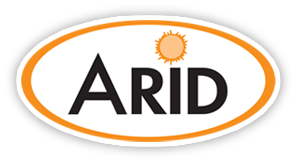AN INSIDE OR OUTSIDE PROBLEM ?
Over the past 20 years owning Arid Basement Waterproofing, we’ve come up with a handful of questions to help you determine the origination of the water seepage. After going through this checklist we’ve devised, you are going to have a pretty good idea on where the water is coming from.
Do you get the water on any given rain or just on the heavy rains?
If it doesn’t matter on the severity of the rain, and you experience seepage on a light rain or on a quick downpour (summertime thunderstorm), you probably have an issue with your grading or leaders (downspouts) and gutters. If your basement survives the light and quick rains, but surrenders to the prolonged storms, heavy downpours, or multiple days of rain, you most likely are dealing with the water table rising up due to the ground getting saturated and having no place to go (except in your basement!).
Real story: I once had a lady who would put a coffee mug outside on her deck when she knew it was going to rain. After the rain, she would measure the accumulation with a ruler–anything under 2.5 inches, she was in the clear–anything over 2.5 inches, get out the towels because it was eventually going to come in!!Do you get water as soon as it starts to rain or does it come in the next day or many hours later?
If the seepage occurs within 30 minutes or less of when it starts to rain, you most likely have an outside problem. Once again, check your grading, leaders and gutters and make sure the grade is sloped away from the house and the leaders and gutters are clean. If it takes many hours or even the next day and you see the puddles on the floor, that points to the water table taking its time rising up from below your basement floor and seeping in.Does the water come from where the floor and the wall meet or does it come down the wall starting at eye level?
When water comes from the wall at eye level and cascades down the wall you most likely have an outside problem. Eye level should typically coincide with where the grade meets the exterior of the house. If the water comes in where the floor meets the wall, that suggests the hydrostatic pressure from the water table underneath the basement slab.
If your answer to these questions all lead to the water table being the source of your seepage, then the one and only way to permanently fix the problem is to install an interior french drain.
